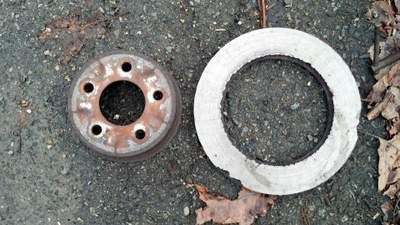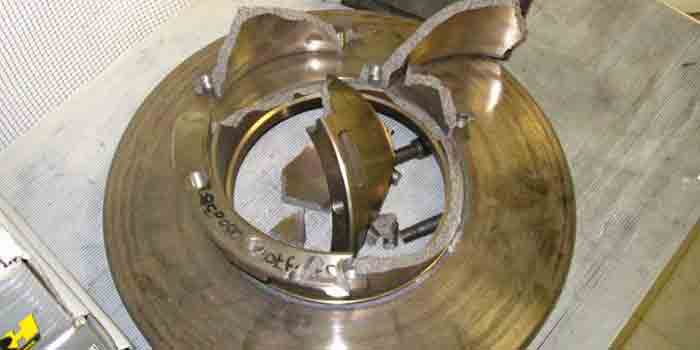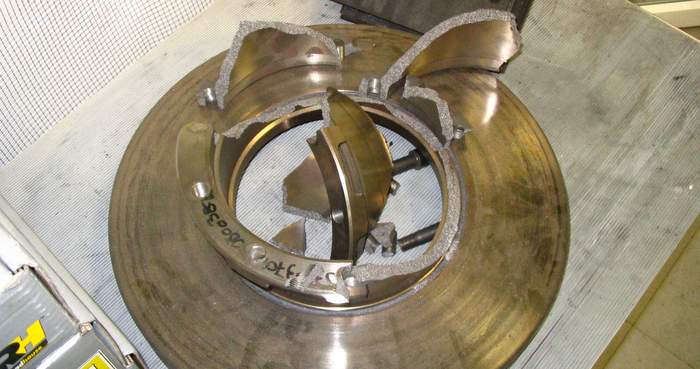The prices of rotors seem to be dropping the past few years. Call just about any parts supplier and they can quote you a vast range of prices for the same application. And when you compare the rotors side-by-side, they may look the same, but the difference between a comeback and a satisfied customer is often at the microscopic level.
Just about every rotor is made of cast iron, but what can make or break a rotor are ingredients like carbon, silica and pearlite. Also, how a rotor is cast and cooled can determine its final properties. This is called the science of metallurgy.
Ensuring that a rotor has the right metallurgy costs the manufacturer time and money. The raw materials don’t necessarily cost more, but the manufacturing process may require more expensive equipment. The energy and labor costs may also be higher.
You may be saying, “iron is iron.” This is not true when it comes to brake rotors. OEMs use different grades of iron to ensure that a vehicle platform has the right characteristics of wear, noise dampening and performance. Like brake pads, rotors can be vehicle specific.
Taking a chance with some “cheap,” “economy” or “inexpensive” aftermarket rotor that doesn’t use the right grade of iron or manufacturing process could end up as a comeback for your shop.
Microstructures
Talk to any metallurgist or materials engineer and they will inevitably mention microstructures. What they are talking about is the bond or connection that atoms and molecules create with each other to form small cohesive structures.
Think of these microstructures as a tiny racecar roll cage. A strong roll cage joins to the chassis at many points, and the bars intersect at many joints. The stronger roll cage is able to resist being torn apart because it has more connections and stronger bonds; a weak roll cage will have fewer bars and joints. A well-designed roll cage can also influence the overall performance of the vehicle.
The same can be said about the cast iron mix that composes a rotor. How the iron interacts with other elements like graphite (a form of carbon), silica and other materials can affect the microstructure of the iron and influence the final product. These microstructures can influence properties like wear, coefficient of friction and noise control.
Metallurgists can fine-tune the mix of iron and elements to give a rotor the right characteristics for a vehicle. For example, adding more graphite to a mix can improve the noise damping properties of the rotor — but the increased graphite content can lower the rotor’s resistance to wear and abrasion. If the wear characteristics need to be improved, a substance called pearlite can be added to the mix.
Achieving the best rotor performance is a balancing act. Adding too much of a component can ultimately affect the rotor’s ability to generate friction and dissipate heat.
 Stress and Heat
Stress and Heat
Casting rotors can stress them out. Going from cold, raw material to a hot liquid, then cooling into a new shape causes stress in the raw casting.
The microstructure of the rotor contracts as it cools. As you can imagine, rotors with large hats or a large swept area have spots that cool at different rates. If one area of the rotor cools faster than an adjoining area, the different rates of contraction cause stress between the two areas.
This stress can influence the performance of the rotor under heat and mechanical forces — this includes warping and mechanical failure. In other words, this stress could cause you the stress of a comeback in some cases.
To avoid these problems for some applications, a reputable rotor manufacturer will perform a process called stress relieving. In this process, the fresh cast rotor is kept at a constant temperature for a certain length of time. Stress relieving is typically performed in the temperature range of 500° C and 650° C for periods up to 24 hours. This can cost a brake rotor manufacturer time and money.
Stress relieving of cast iron rotors can be performed to minimize rotor warping or thickness variation that can occur under extreme service conditions. Stress relieving has no effect on microstructure. While it may not be required for every aftermarket rotor, for some applications it is critical.
Some in the aftermarket believe that stress relieving can be taken one step further by cooling the rotor with liquid nitrogen, commonly known as cryogenically freezing. This process is similar to stress relieving, but instead of using a high temperature, the rotor is cooled to -300º C. According to companies that perform this service, this process relieves stress and improves microstructure.
This process was once used only on exotic racecars, but many municipal fleets of ambulances and police interceptors are using cryogenically treated rotors to cut replacement costs.
Too Good to Be True
Selling a low-priced rotor takes more than the cheap labor and relaxed environmental standards of a third world country. To be the least expensive rotor, the cost cuts come at the expense of metallurgy.
Not all rotors from overseas have incorrect metallurgy. In fact, some of the best casting comes from overseas, but it’s up to you to investigate brands and reputations.
Courtesy of Brake & Front End.















